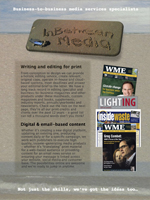
The understanding-action gap is where we currently sit in regard to climate change and carbon policy and business approaches.
As I write, it’s been reported that the longest running program for atmospheric monitoring of carbon dioxide, Mauna Loa in Hawaii, is again struggling financially. It reminded me of the important markers this year in relation to climate change and the various responses from government and business to the challenges it presents.
What stands out is the knowledge-action gap, often referred to as the science-action gap, but which I would further adjust to the understanding-action gap. What we see clearly is that having knowledge about climate change and its possible impacts, however it is delivered, while helpful doesn’t necessarily change anything. Understanding implies comprehension, grasping the meaning, nature, or importance of information at the very least, and sympathetic awareness at best.
There are other projects measuring CO2 in the atmosphere but having the consistency of data provided by Mauna Loa is a valuable scientific resource which would be more than symbolic to lose. It reported, earlier this year, that daily concentration of CO2 had reached 400 parts per million for the first time in three million years. It should be clear that the program is an important part of helping us to understand climate change.
It was reported this year by the United Nations World Meteorological Organisation that the amount of greenhouse gases in the atmosphere reached a record high in 2012, continuing an upward trend which is driving climate change and which will shape the future of the planet for hundreds and thousands of years.
The latest assessment report delivered by the Intergovernmental Panel on Climate Change also made for sobering reading. Andrew Glikson, a scientist from the Australian National University wrote on its release, “No amount of media and internet spin can alter the essential evidence for runaway climate change presented by the AR5 report, nor the consequences for future generations and nature”.
The unprecedented rate of ocean acidification is one of the most alarming phenomena generated by climate change and the only way to mitigate the dangers it represents consists in reducing CO2 emissions significantly. This was one of the news bites coming out of the latest United Nations climate talks in Poland.
Several other sources confirmed that China was dismayed by the Abbott government’s move to repeal the carbon price, particularly given the landmark agreement to co-operate on climate change it made with Julia Gillard just this year.
China is pushing on, with trials of carbon pricing currently underway, and pilot carbon trading schemes to commence in Shanghai and Beijing before year’s end. There are at least seven further such schemes planned for the coming year.
What the IPCC does say is that emissions related to human activities must not exceed 1 trillion tonnes if we are to have a likely chance of limiting warming to 2°C. The world has already used up more than half of this “carbon budget,” and under a carbon intensive trajectory, is on track to exceed it in about three decades.
New scientific work suggests that burning through only 26% of reserves of coal, oil and gas would break the “carbon budget”.
While Australia’s emissions reduction target of a 5% reduction of CO2 emissions has been widely discredited, it needs to find a further 108 million tonnes of annual emissions reductions 2019-20 in order to meet that target through domestic abatement.
In its submission to the Government’s Emissions Reduction Fund terms of reference, think tank ClimateWorks said the shortfall can be achieved in Australia using known technologies and activities, with appropriately targeted incentives. Among them, should be sector-specific emissions standards for vehicles, buildings, industrial developments and land clearing.
But whether Australia maintains the “current momentum”, a necessary premise of ClimateWorks modelling, in the absence of a carbon price remains to be seen. Also unknown, is the intention behind the dismantling of climate change advisory bodies and changes to Federal environment laws. Are they an attempt to make government and business more efficient, or to silence of certain voices?
Business movements
Those voices raising awareness of the irreversible impacts of climate change, appear to have gotten through at the level of local planning and business, with significant interest this year in climate change adaptation. However, there has also been a cloud hanging low over corporate social responsibility (CSR)/sustainability activity. Some have suggested this is due to a focus on costs as well as the persistent gap in organisational buy-in and understanding of the issue.
The results of the world’s largest CEO sustainability study makes for disappointing reading as it provides evidence that for many, their journeys towards real business transformation have ground to a halt.
In an attempt to frame the role of business, other research showed that 90 companies on the list of top emitters produced 63% of the cumulative global emissions of industrial carbon dioxide and methane between 1751 to 2010.
The decision makers for these entities could fit on a “Greyhound bus or two” according to the lead researcher . His comment evokes a tantalising ‘road trip’ for dealing with global emissions, given industry will need to find emissions cuts of 1.5-4.6 gigatons of CO2, as part of wider efforts to keep global temperature rises below 2°C, according to a report from the United Nations Environment Program. Many of these enterprises are still sitting on significant reserves of fossil fuels.
In an interview earlier this year, CEO of Sustainable Business Australia, Andrew Petersen, questioned whether Australian industry was thinking beyond simple strategy, with a view to becoming truly innovative and entrepreneurial in its style of engagement.
Innovation has long been understood as an essential part of competitive advantage. Some companies are now developing this idea further, in an attempt to ensure long-term viability, as demonstrated in a report from sustainability advisory firm Net Balance. Put simply, the idea of creating shared value (CSV), is aimed at generating profit by addressing social or environmental issues.
For example, one project that Net Balance is studying is an initiative of professional services firm PricewaterhouseCoopers. PwC Indigenous Consulting, a purpose-built enterprise majority owned and operated by indigenous people, says it will increase the scope of authentic indigenous consultancy activity and contribute to building more empowered and resilient communities.
“CSV is about weaving social need in to the fabric of business and creating new ways of doing things. Importantly it is evidence-based. It is not about intention, but measureable impact in solving identified problems,” said Net Balance Director, Terence Jeyaretnam.
An interesting cross-sectoral call came recently from global social scientists, through a United Nations Educational, Scientific & Cultural Organisation (UNESCO) report. Emphasising that global warming is more about people than carbon emissions, the report says that the question before social scientists is how we direct human behaviour and social practice away from a well-established development model and lifestyle that continues to add to global greenhouse emissions.
“Transforming emissions from industry is one thing, and by no means simple, but changing an entire nation’s lifestyle is another. Perhaps before this question can be answered, social scientists must first ask why human behaviours which add to greenhouse gas emissions are so resistant to change,” writes Olive Shisana president of the International Social Science Council.
She believes social scientists are uniquely positioned to help shift the current development paradigm to a more sustainable path, part of which will necessarily involve understanding the nature and scope of the changes required. That’s not so new – we’ve been receiving dire warnings about climate change consequences from scientific agencies for years. But the difference for social scientists is in understanding how these changes could be realised in politically feasible and culturally acceptable ways.
One contributor to the UNESCO report, John Urry, sums up the challenge well, describing it as “…‘reversing’ most systems set in motion during the 20th century, finding the equivalent of a reverse gear while going forwards very fast”.
© 2013 InBetween Media
Further reading:
The Potential for Creating Shared Value in Australia – How Australian companies co-create long-term commercial and social value
Draft Insights for a Green Paper (Net Balance)
Achieving Australia’s emissions reduction targets in the context of a Direct Action approach – ClimateWorks
2013 World Social Science Report – UNESCO


Comments are closed.